On a blistering cold evening in February, not even the superb pre shoot pie and peas in the canteen could fully warm the gathered 40 or so photographers ready for an eagerly anticipated shot of the museum’s two resident Mirages under the lights. For this was the first time that the museum’s Dassault Mirage IV No 45, the only example outside of France had been used on a night shoot. Arriving at the museum in 2017 under a unique arrangement with the French Government on a convoy of 2 trucks and 4 support vehicles from Air Base 279 Châteaudun to Elvington in Yorkshire. This momentous event only made possible because of the historical connection with the French Air Force when the Free French Air Force was based at the Yorkshire airfield.
As the photographers ventured out into the crisp Yorkshire evening, 5 aircraft were waiting for them under the lights.
Dassault Mirage IVA 45/BR (Bravo Romeo) was built in 1966 and flew for the first time on 6th May of that year. Her crew for that flight was Elie Buge (pilot 1923-1967, first non-commissioned officer to cross the sound barrier) and Jean Cuny.
Delivered to the French Air Force on June 3rd, 1966, Bravo Romeo completed 6,309 hours of flying and 2,975 landings. It left active duty and made its last flight on September 11th, 1991 before joining the Châteaudun base. It was then exhibited at the Cité des Sciences et de l’Industrie in Paris from March 1995 to January 2009 before returning to Châteaudun”. She arrived at Elvington in March 2017 as mentioned above and was unveiled in September that year. She is preserved in the markings of the Centre d’Instruction des Forces Aériennes Stratégiques 328 (CIFAS 328) “Aquitaine”. She is the only Mirage IV preserved outside of France and being a nuclear capable bomber is still satellite tracked by the French Air Force.
XN974 was built in 1964 initially as an S.1 but was converted mid production to become the first production Buccaneer S.2 to be delivered, making its first flight from British Aerospace airfield at Holme-on-Spalding Moor on 5 June 1964. <br>
The Blackburn Buccaneer S.2 was a two-seat, low-level, strike and reconnaissance aircraft of all-metal, stressed-skin construction, powered by two Rolls-Royce RB Spey Mk.101 turbofans, delivering 11,100 lb thrust. It had a maximum speed at sea level of 690 mph (Mach 0.92), a tactical radius of 500-600 miles and a range of 2000 miles.
The Buccaneer served in the Fleet Air Arm for a number of years as its major low-level strike aircraft before being enlisted by the Royal Air Force for long-range strike and photo- reconnaissance. About 100 Buccaneers entered Royal Air Force service from February 1969 until their retirement after the Gulf War.
XN974 flew on trials work her entire career operating from Bedford, Driffield and Warton with the Royal Aircraft Establishment and Aeroplane and Armament Experimental Establishment. She carried out sea trials aboard HMS Eagle and hot weather trials in the United States. On her return flight from the US she became the first Royal Navy aircraft to fly transatlantic without refuelling.
After retirement she was flown into Elvington in 1991. In late 2016 / early 2017 significant engineering and restoration work was undertaken on NX974 including repainting into her original Royal Navy colour scheme which she still has today. She is maintained in ground running condition.
The Dassault Mirage III was developed in the early 1950’s for the French Air Force. Versions included the Mirage IIIB two seat training version, the Mirage IIIE for tactical nuclear or conventional strike bombing and the Mirage IIIR for reconnaissance. Dassault Mirage IIIE 538 was a single-seat tactical fighter-bomber powered by a SNECMA Atar 9C turbojet rated at 13,620 lb thrust with re-heat. Its maximum speed was 1,460 mph (Mach 2.1) at 40,000 feet. Armament was two 30mm cannon and up to 5000 lb external ordnance.
Mirage IIIE 538 was presented to the Yorkshire Air Museum as a memorial to the Free French Squadrons 346 (Guyenne) and 347 (Tunisie) who flew Halifax bombers from there in 1944 and 1945.
Westland Dragonfly HR.5 WH991 was built in 1953 as a license built version of the Sikorsky S-51 and served with HMS Illustrious Ships Flight, 705 Naval Air Squadron and HMS Centaur Ships Flight before being converted to HR.5 standard in 1958.
In 1959 she was used for thermal trials in the Caribbean aboard the survey ship HMS Vidal. Returned to the UK in 1960, WH991 then flew with 700H Naval Air Squadron at RNAS Yeovilton and was again used for trials work when she operated from INS Vikran, previously HMS Hercules, on behalf of the Indian Navy.
After this, she returned to 705NAS at Culdrose until put in store during 1964 and moving to the Royal Naval Air Yard at Fleetlands in 1967. Sold off in June 1970, she moved first to Taunton, then to the Lincolnshire Aviation Museum at Tattershall Thorpe in 1974 and finally to a scrapyard near York in 1988. Saved by the late Ray McElwain, she arrived at Elvington in 1994 and was beautifully restored by members of the newly formed Yorkshire Helicopter Preservation Group (YHPG), before being donated to the Yorkshire Air Museum.
Canadair CT-133 Silver Star 417 was built in 1954 for the Royal Canadian Air Force with the serial 21417, later renumbered as 133417. The CL-30, later designated CT-133, was a tandem two-seat, armed trainer version of the F80 ‘Shooting Star’, powered by a Rolls Royce Nene 10 turbojet, delivering 5,400 lb thrust. Armament consisted of two nose-mounted 12.7 mm (0.5 in) machine-guns plus various light bombs, rockets and machine-gun pods. It had a service ceiling of 48,000 feet, a maximum speed of 600 mph at sea level and a cruising speed of 455 mph. The normal range was 1,025 miles and the maximum range was 1,275 miles.
The aircraft was one of 636 jet trainers built under licence by Canadair for the Royal Canadian Air Force, from 1952. The type was known in Canada as the ‘Silver Star’. It was used as an instrument flight trainer whilst in service with the Canadian forces in Germany.
With only a handful of photographers left towards the end of the shoot the organisers were persuaded to re-arrange some of the lights so both Mirages could be captured in the same shot. This was a fitting end to a superb shoot and I look forward to the next oppertunity to capture the Museum’s superbly well kept collection.










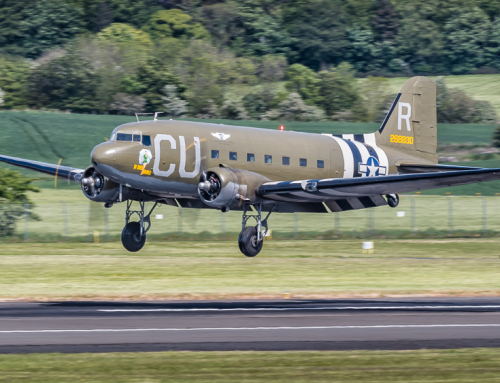
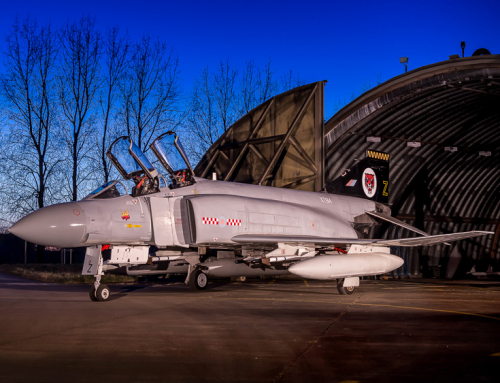
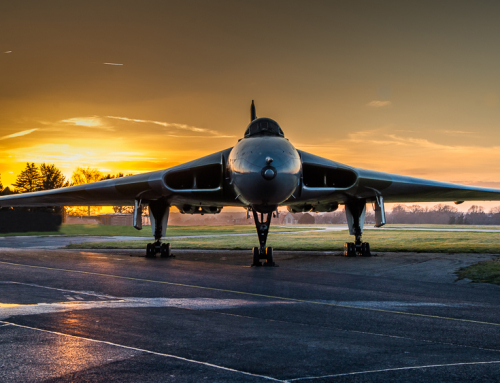
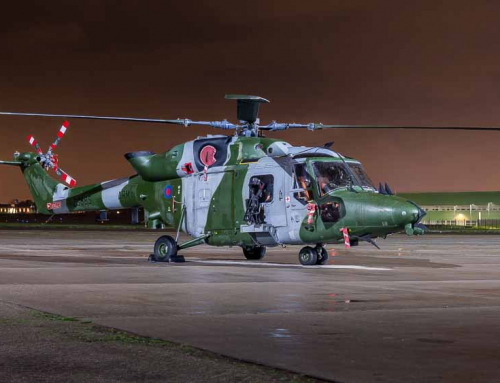
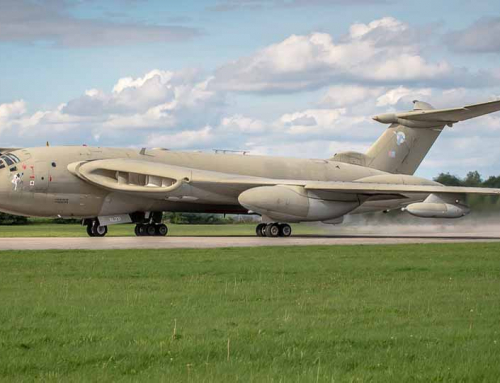
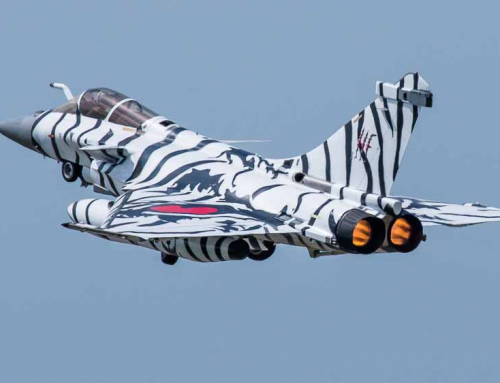
Feel free to add a comment